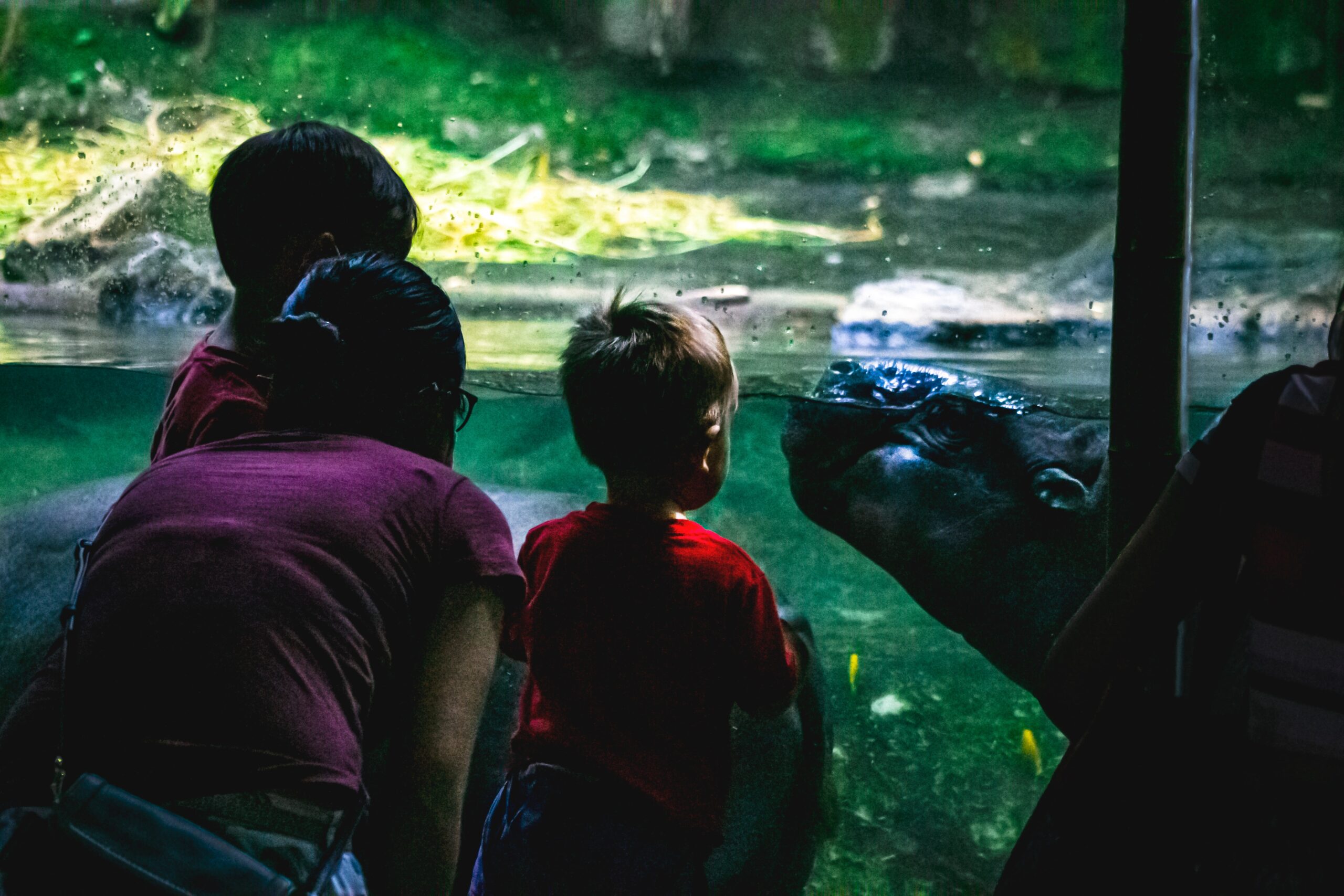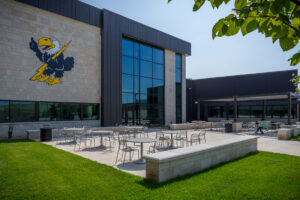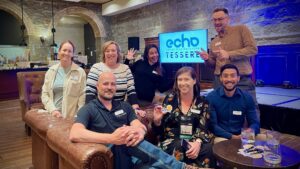Ambassador animals play a pivotal role at zoos & aquariums, engaging audiences in compelling experiences that spark connection, foster empathy, and inspire caring action on behalf of animals and nature. When not actively engaged in programming and encounters, these animals deserve enriching, comfortable homes, and exceptional welfare.
At TESSERE Zoos, we like to think differently about the future of Zoos and Aquariums. We believe in asking curious questions that challenge assumptions, ignite change and drive transformation. That’s why we convened a brilliant mix of zoo & aquarium educators and animal care professionals in our first Innovation Think Tank intended to reimagine homes for ambassador animals.
As the zoological community at-large engages in passionate discussion around the future of ambassador animals, it is clear there is no one-size fits all solution. Instead, we offer a series of questions and a few practical ideas that emerged from this Think Tank as a framework to help you facilitate a conversation at your organization around how you house ambassador animals.
These questions are big, hairy, and audacious and will undoubtedly spiral into a variety of other areas at your organization. However, these are the types of questions we should be asking.
Paradigm Shifting Questions
Why does your organization have ambassador animals? What differentiates these animals from the rest that call your facility home?
- – Many current working definitions of ‘ambassador” animals provide little delineation from ‘exhibit’ animals. If the purpose of ambassador animals are to make connections with guests and inspire empathy or fascination, that isn’t far off from the purpose claimed for exhibit animals. Clarifying why your organization has ambassador animals, and what makes them unique, is essential to framing your conversation around housing.
What impact is your ambassador animal program having?
-
- – Have you defined the objective(s) of your ambassador animal program? How are you measuring impact? Numbers do not guarantee impact, so if your metrics do not extend beyond the number of programs facilitated or how many guests attended your shows, it is time to critically assess how your organization is ensuring that your ambassador animal program is uniquely achieving educational, empathy building, and behavior change objectives.
- – Is your ambassador animal program any more effective at achieving these objectives than other programs that do not involve engaging with live animals, guests experiencing stimulating exhibits, or visitors interacting with your passionate staff and volunteers?
Can you provide your ambassador animals with equal opportunities to thrive as your exhibit animals?
-
- – Providing ambassador animals with exceptional welfare that matches or exceeds that of exhibit animals requires a significant investment in time, space, and money.
- – Does your organization have the resources to authentically do so for all your ambassador animals? Why do you have the number and types of animals that you do?
What is the real driver of choices around ambassador animals at your organization?
- – Is it welfare? Is it meaningful connections and measurable outcomes? Is it generating revenue through events and impressing donors? Having honest conversations about these drivers and your organization’s priorities will guide better decisions and adaptation of processes and physical infrastructures. This is a hard conversation and will require humility, honesty, and trusting one another within your organization.
Will your organization commit to having ambassador animals for the next 20 years or more?
- – If not, do not invest heavily in the construction of new ambassador animal housing or related facilities. Instead, initiate a phase-out plan and redirect resources to advancing welfare and your organization’s mission in other ways.
- – If yes, consider using the tips below to facilitate a critical conversation around ambassador animals at your organization.
Does taking ambassador animals off-site meet your objectives, and can you maintain high standards of welfare while doing so?
- – There are a lot of complications to taking ambassador animals off site. However, there are also amazing opportunities like bringing joy to children in hospitals or seniors in retirement homes, traveling to schools that can’t afford or manage to visit your facility, and more. Your organization’s decisions around traveling ambassador animal programs have implications on housing design, such as managing quarantine and disease transmission issues, ease of care, and access to animals.
What low-cost experimental changes to your current ambassador animal housing could you try that might advance their care and welfare?
- – It’s not always possible to build brand new spaces, but perfection is the enemy of progress. Making small changes with specific intended outcomes allows for testing ideas, learning, adapting, and growing.
Tips for Facilitating This Conversation at Your Organization
Reserve time for two 90-minute meetings, 1-2 weeks apart.
Identify a team of stakeholders with varying perspectives and expertise. Consider including representatives from education, animal care, finance, guest experience, development, marketing, and senior management, but keep the group to 8-10 individuals.
Recruit a facilitator who can remain objective. This may be someone from inside your organization or you may want to ask someone from a partner organization to assist.
In your first meeting, take 10 minutes to talk through and respond to each question posed here.
- Nominate someone to be the “why” person. This person is to politely but persistently ask “why” 2-3 times after each comment to develop a deeper understanding of each valuable perspective.
In your second meeting, spend the first 15-20 minutes on “overnight thoughts”. What have people thought about since the last meeting? Then, transition to testing ideas. Use a whiteboard or sticky notes to generate a shared list of opportunities to improve your ambassador animal program. Using this list, build an Action Priority Matrix and categorize your ideas according to impact and effort. Are there any that fall into the high impact & low effort quadrant? What would it take to test these ideas?
Identify champions for further developing action plans, metrics for success, and seeking approval for implementation.
Consider setting up regular meetings to assess progress and metrics.
Designing Homes for Ambassador Animals
If, after engaging in an intentional, objective-driven conversation around ambassador animals at your organization, you are embarking on construction of new or updated housing, TESSERE Zoos advocates for:
The Baseline:
- – Natural light & day/night cycles for all species.
- – Natural substrate.
- – Dynamic spaces that facilitate natural behaviors and thriving animals 24/7. The tendency is to rely on exercise areas for ambassador animals, but these give animals limited agency, choice, and control.
- – Access indoors/outdoors where applicable.
Progressive Models:
Consider avoiding one facility or complex for all ambassador animals. We need a paradigm shift, and if we start from where we’ve been, we’ll be tempted to do the same thing, just bigger. Begin by identifying objectives for meeting each ambassador animal’s holistic needs for thriving 24/7 – physical, social, and mental – and design spaces accordingly. This may take the shape of one or more of these concepts:
Concept 1: Enriching and dynamic habitats for ambassador animals throughout your facility that animals may leave for facilitated encounters and programs. Clever signage helps guests understand when habitats are empty.
Concept 2: Enriching and dynamic habitats for ambassador animals throughout your facility that guests enter or approach to engage in a staff-facilitated encounter.
Concept 3: Enriching and dynamic habitats with connected facilitated encounter areas; ambassador animals have access to both areas and can choose to engage in the encounter or not.
In Conclusion:
In the modern zoo, every animal serves as an ambassador for their wild counterparts, connecting with and inspiring people toward good for wild life and wild places. It is the responsibility of the entire zoo & aquarium community to steward all animals in our care to thriving 24/7/365, and to do so we must have the courage to ask critical questions, articulate and measure objectives, challenge assumptions, and change course, when necessary, even when difficult. As Sylvia Earle memorably said at the 2022 AZA (Association of Zoos and Aquariums) Mid-Year Meeting, “We know more today than we have ever known before”. And tomorrow we will know more than we did today. It is up to us to embrace our new knowledge, to keep reaching and evolving, to better achieve a brighter future for wild life and wild places.
Thank you to our Innovation Think Tank participants:
Rachael Bashor, Riverbanks Zoo & Gardens
Nicki Boyd, San Diego Zoo
Katie Cronin, Lincoln Park Zoo
Chelsea Dunlap, Santa Fe College Teaching Zoo
Brian Lynn, AWARE Institute
Katie Manion, Independent Zoological Professional
J.J. McLeod, Santa Barbara Zoo
Jacqueline Menish, Nashville Zoo
Dana Murphy, Lincoln Park Zoo
Natali Rodgers, Tennessee Aquarium
Autumn Russell, Akron Zoo
Jade Salamone, Santa Fe College Teaching Zoo
TESSERE Zoos is Your Thought Partner
Are you thinking about a change to homes for ambassador animals at your organization? Big or small, the team at TESSERE Zoos and our partners in animal welfare science can help! Emailecho@glmv.com to set up a conversation.




